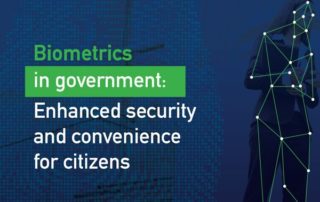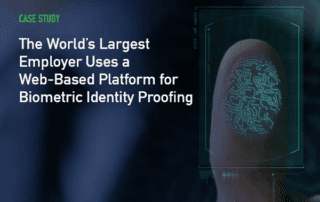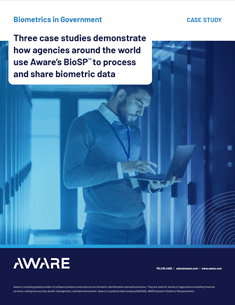Rise of Biometrics in the Cloud
ARTICLE | 2 minute read
Going Passwordless
ARTICLE | 4 minute read
Biometrics in government: Enhanced security and convenience for citizens
A brief history of biometrics Fingerprint-based identification began in law enforcement. An Argentine detective first solved a crime using a latent print (left behind by the perpetrator) in 1892. In 1901, detectives in England and Wales officially began using fingerprints in criminal identification. Their use snowballed from there. By 1946, the FBI managed a library of 100 million fingerprints, according to the U.S. Marshals Service. The agency developed the Automated Fingerprint Identification System (AFIS) in the 1970s to manage the massive and still-growing collection more effectively. AFIS became “Integrated AFIS” (IAFIS) in 1999 to help law enforcement agencies share [...]
CASE STUDY | The World’s Largest Employer Uses a Web-Based Platform for Biometric Identity Proofing
The US Department of Defense uses Aware’s WebEnroll™ platform on 3,500 workstations for browser-based biometric enrollment and data management to make their background check system more secure and its maintenance more efficient. The U.S. Department of Defense workforce consists of 1.4 million men and women in uniform, and over 800,000 civilian personnel. The Defense Manpower Data Center (DMDC) is the agency responsible for administering the DOD’s personnel-related tasks, including background checks for all in-uniform and civilian employees. Each year, thousands of new employment applications are processed. Part of the employee onboarding process is to collect the fingerprints of every [...]













